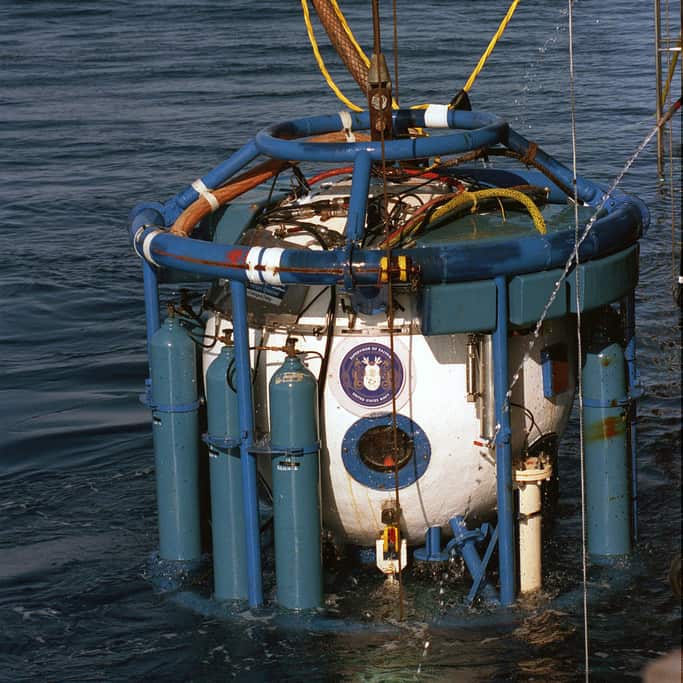People who aren’t familiar with scuba diving and deep sea diving tend to use these terms as synonyms. After all, aren’t all dives done deep in the sea? To differentiate the two, we need to define what deep diving means in a recreational sense, and how it’s different from offshore commercial diving which is on another level.
Scuba diving is a broad term that encompasses many types of diving, however it is typically taken to mean recreational scuba diving in shallow waters (down to 18 m / 60 ft). Deep sea diving is a type of diving which is done by commercial divers that takes place at depths far past the recreational limits (i.e. several hundreds of feet underwater). It often requires specialized gear that the general public does not have access to.
In this article we’ll discuss the differences between recreational scuba diving and commercial deep sea diving, and the kind of training and gear required to make it as a commercial diver.
What is a deep dive?
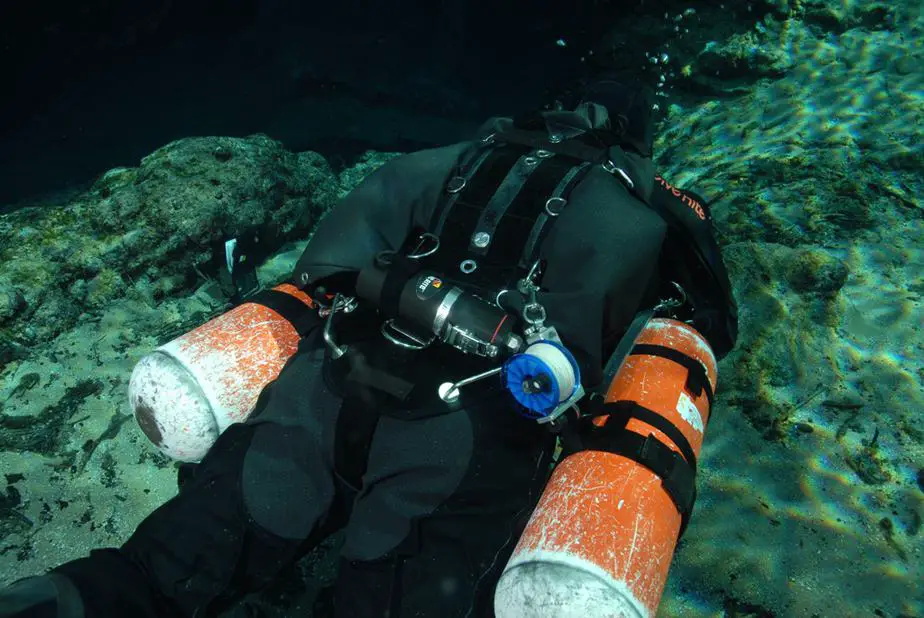
Technically, any dive past 18 m is considered by PADI to be a “deep” dive. And any dive from 18 m to 40 m (130 ft) is considered the range for deep recreational diving. Beyond that, you enter the territory of technical diving. However, when we consider the depths that deep sea commercial divers go to, then it’s not quite the same depth level and risk compared to a recreational deep dive, and it even exceeds technical diving.
With that said, even the recreational diver can improve how deep they dive by getting new certifications, and maybe one day they aspire to become a professional deep sea diver themselves. In this article, we’ll discuss the differences between recreational scuba diving vs. deep sea diving to give you an idea of the gap between them.
What is the path from scuba diving to deep sea diving like?
There are many levels of certifications one must first achieve before one can go from recreational scuba diver to deep sea diver. If you want to increase your depth limits, the general progression is something like this: Open Water Diver > Advanced Open Water Diver > Deep Diver > Various Technical Diving courses from PADI Tec 40 to 100. If you want to be a commercial diver, you need to go to commercial diving school and then get hired for a commercial deep sea diving job. No previous diving experience is necessary but it’s recommended.
With each new certification you get, your maximum depth limit increases. From 18 m (60 ft) at the very beginning, up to 100m (330 ft) once you finish your last technical diving course. Beyond that, the gear needed to withstand the water pressures at extreme depths (>300 ft) are not accessible to the public. You’d need to get hired as a commercial diver to reach these deeper depths.
Many of these courses have requirements that must be met in order for you to even qualify for them. They’ll require you to have prerequisite courses which often include specialty dive courses to make you a more well-rounded diver, as well as a minimum number of logged dives. This is to ensure that you have a good foundation of knowledge and experience to handle the next level of scuba diving.
In the next sections, we will go over what it’s like to be at each level and how you can progress to the next one up.
Recreational scuba diving (18 m / 60 ft)
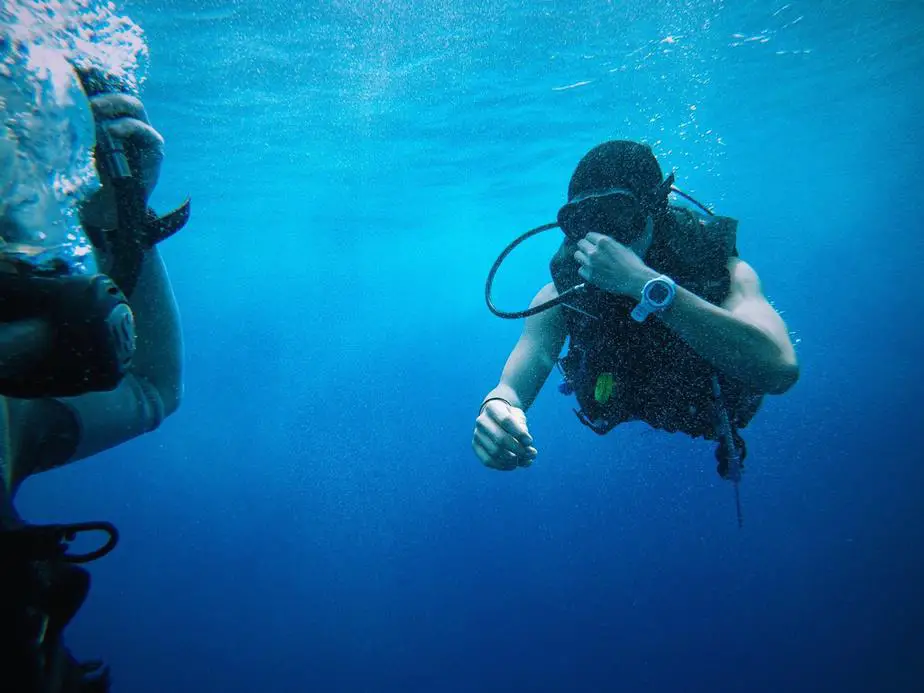
Scuba diving courses are designed to educate students in manageable chunks so that they have time to practice what they have learned before they tackle a more advanced course. You will not be able to do any sort of deep sea diving without extensive training and plenty of diving experience.
The first level of scuba diving is recreational scuba diving. The distance between rec diving and deep sea diving is literally several hundreds of feet apart. When you first get certified by completing the Open Water Diver course, your maximum depth limit is only 18 m / 60 ft, with a dive buddy, in similar conditions to your training.
If you would like to broaden your horizons, you can take additional courses such as night diving, wall diving, altitude diving, and drift diving.These don’t increase your depth limits, but they equip you with the skills to dive in more environments.
In the pursuit of getting certified for them, you may also need to take some specialty courses that can be used as a prerequisite for the next certification that increases your depth limit. Learning new types of diving helps keep this activity from getting boring and the unique experiences you’ll get makes it worth doing.
Another defining trait of recreational scuba diving is adherence to the no-decompression limit (NDL), as well as avoidance of any overhead environments such as caves, wrecks, and ice. At this level, it is simply too dangerous to attempt such extreme dives. While there are no scuba police that will stop you, if anything should happen, you could get injured, cause others to get injured, or cause loss of life (typically your own).
The no-decompression limit is how long you can stay underwater without needing to do any decompression stops during the ascent. You will still be required to make a 3 minute safety stop a few meters from the surface. The point of adhering to the NDL is to drastically reduce your chances of getting decompression sickness.
Most recreational divers are fine with their depth limit, however others want to explore even deeper. What can they do about it? They’ll have to progress to the next step: deep recreational diving.
Deep recreational diving (40 m / 130 ft)
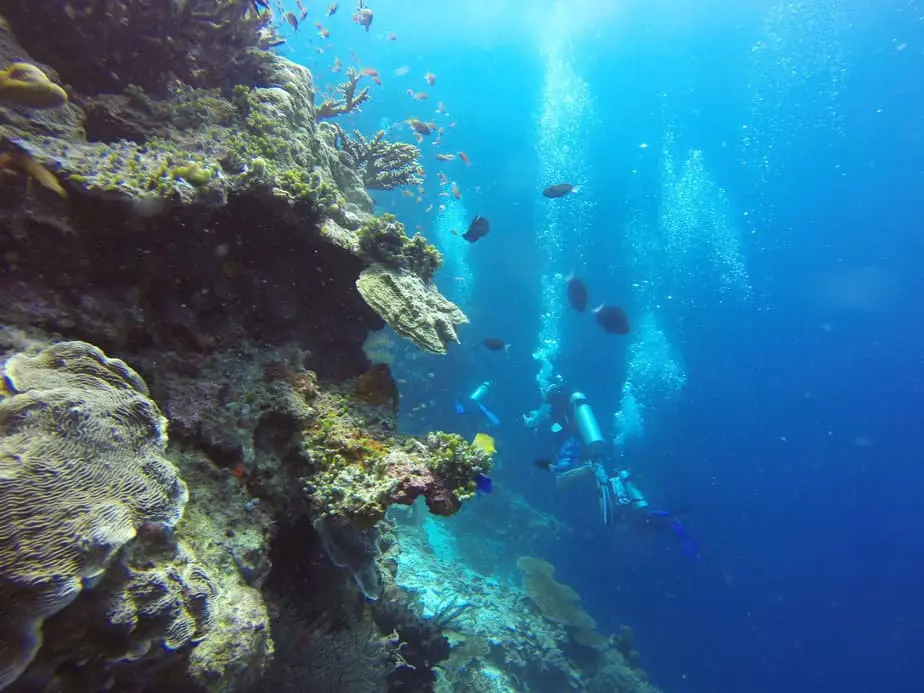
Do you think that the depth limit is too low for Open Water Divers? The next step is to get your Advanced Open Water Diver and the Deep Diver certification which increases your limits to 21 m / 70 feet and 40 m / 130 ft respectively.
We highly recommend taking the Advanced Open Water Diver course because it builds upon the skills taught in the Open Water Diver course. Plus, this certification is a prerequisite for other advanced courses you might want to take in the future (i.e. technical diving courses). It adds an extra 3 m / 10 ft to your depth limit, which is minor, however the survival skills it teaches are essential.
If you really want to have a massive increase in your maximum depth limit then you’ll want to take the Deep Diver specialty course which basically doubles your depth limit. At 40 m / 130 ft, this is the upper limit for what is considered to be recreational diving.
Diving deeper naturally increases the risks a diver will face. The most obvious one is that there is a greater distance from the surface, so if you need to surface due to an emergency, then it will take longer than usual. Divers need to be somewhat self-sufficient and skilled enough to deal with problems that occur at depth.
Of major importance for deep divers is an understanding of the effects of the water pressure on their physiology and how it affects their breathing gas. First, the water pressure causes the volume of breathing gas to decrease even more, reducing the bottom time and causing you to reach your NDL faster.
Furthermore, at depths greater than 30 m (100 ft), the risk of nitrogen narcosis starts to be very noticeable. Nitrogen narcosis will cause you to feel like you’re drunk, making keeping track of your NDL and making rational decisions difficult. In extreme cases, some divers have taken their regulator out of their mouth because they were convinced they could breathe underwater.
Since this is still within the category of recreational diving, deep dives are still considered no-decompression dives. Thus, you should still plan your dives such that you surface before you exceed your NDL since you have not yet received proper training on how to safely perform decompression stops.
As long as you stay within your NDL, theoretically you can swim directly to the surface from depth and remain reasonably safe from the effects of decompression sickness. This can give divers peace of mind knowing that they can reach the surface quickly in an emergency.
When you go into the next level of diving, which extends the maximum depth limit even further, all dives will become decompression dives. You’ll no longer have that safety net of being able to surface whenever you want, but you can dive deeper than ever before with a massive increase to the depth limit. Your next step is to learn about technical diving.
Technical diving (100 m / 330 ft)
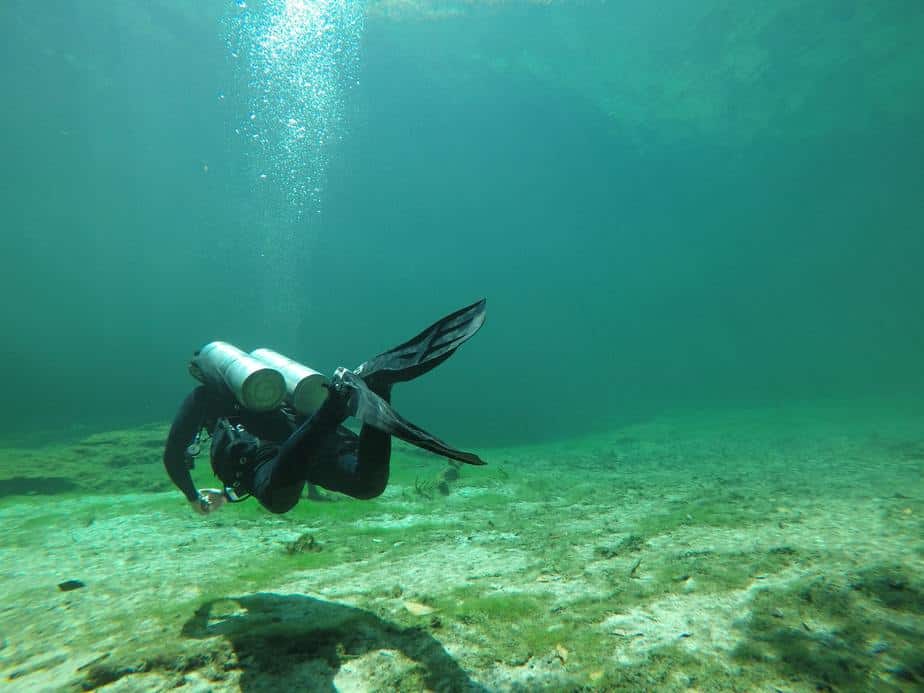
Now, we have reached a high level of diving, though still not quite the level of commercial diving. Technical diving, or tec diving for short, lets the enthusiast diver go beyond the recreational diving limits – deeper and longer dives well beyond the NDL, often a combination of both.
After you have received technical diving training, you may be equipped with the skills to dive in overhead environments such as wrecks or caverns or caves. You will also learn specialized skills and be equipped with specialized gear to safely accomplish these sorts of dives.
A diver who has surpassed their NDL or depth limits without proper training or gear is not a technical diver. They are just highly irresponsible and are one accident away from disaster.
Technical diving is very demanding which is why there isn’t a singular tec diving course, but many levels. Each tec diving course you take will increase your depth limit up to a maximum limit of 100 m / 330 ft. With each course you will learn new theory and gain new diving experiences before you are allowed to advance to the next course.
Much of the lessons will be dedicated to practicing essential survival skills so that divers can consistently follow procedure during stressful situations so that they can stay safe or help a fellow diver. You will learn how to plan each dive carefully, with back-up plans prepared in case the unexpected happens.
When surfacing from this great depth, the decompression process will be very technical. You must plan out when to stop, for how long, while breathing which gas mix, in order to safely decompress and return to the surface.
Once you’ve reached the level of technical diving, then the world is your oyster. You dive in most dive sites and get the full experience. For example, some wrecks are only accessible if you can dive beyond 100 ft. Next, some wall dives are also done starting at a depth of 100 ft.
If you want your dives to last longer, you’ll need to learn about using multiple tanks. Many wreck and cave divers prefer to dive sidemount because it streamlines their profile and allows them to carry multiple tanks. You will also learn about closed-circuit rebreathers which recycles the air you exhale so that you can dive for much longer.
When performed correctly, technical dives will provide you with unique diving experiences that feel divers will have the opportunity to visit. Much of your limits have been removed, and you can dive deeper and longer than most divers, but still not to the level of deep sea diving.
Commercial deep sea diving (200 – 2,000 ft)
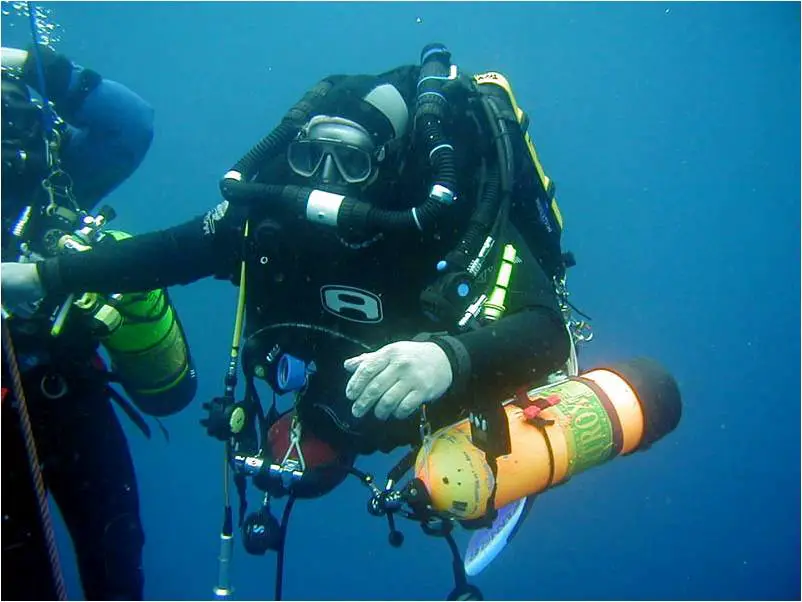
Finally, we have reached the apex of scuba diving, possible only for the crème de la crème of all scuba divers, which is commercial deep sea diving. The equipment commercial divers use are different from what the average consumer can buy – the standard BCD and fins are not used. The equipment commercial divers use depends on the job they are doing and how deep they will be diving.
Offshore, inland, and coastal commercial divers are now permitted by OSHA to work at depths of 180 to 200 ft wearing helmets with an umbilical that supplies air from the surface as well as contains the cables for the communication system built-in. This allows divers to communicate with a crew at the surface without the need for hand signals or tugging on a line.
At depths of 200 to 300 ft, the diving rigs will supply helium and oxygen as the gas mix to combat nitrogen narcosis. As of now, there is some overlap in depth between technical and commercial diving. However, the equipment used is much more advanced for commercial divers because communication is crucial.
To 300 ft, diving is similarly performed using a mix gas system, however ascents and descents are made in a bell. Divers will exit the bell to quickly perform the job before re-entering the bell to ascend. This type of diving is known as bell-bounce diving.
Some commercial divers reach depths that other divers can only dream of. With full saturation dives, commercial divers can reach depths of almost 2,000 ft (600 m). Made famous by their dive, a crew of eight divers spent 30 days underwater at a depth of 600 ft. They needed several days to decompress before they could surface.
Thus far, it seems like the upper limit for human divers is 2,000 ft. Beyond that, there is evidence that divers will surface tissue damage, and that’s not even considering the potential for bends and other physiological problems.
Thanks to advancements in technology, we don’t need to send humans to the depths. Often, for dives that exceed 300 ft, the offshore industry uses ROVs (remote operated vehicles) or AUVs (autonomous underwater vehicles). In depths where human divers can still withstand it, the ROVs or AUVs may be used for support. When it’s not safe for a human diver to perform the work, then the ROVs will be used instead.
On average, the depth of the ocean is 12,100 ft (~3,700 m). ROVs have been used for exploration at a depth of 10,000 ft. Soon, there may be ROVs that can completely reach the bottom of the ocean.
Human depth limits for scuba diving
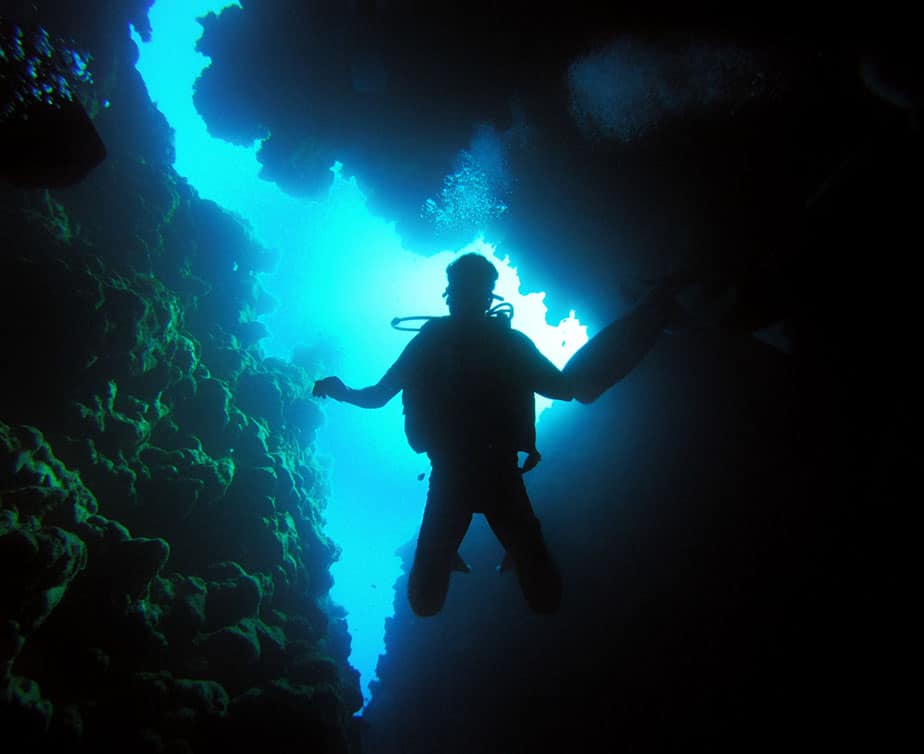
It appears that human divers have reached their physical and physiological safe diving limits, with further progress only possible so far with the help of ROVs and subs. However, since the focus of this article is on scuba diving, then it appears that for the time being at least, we have reached our natural limits.
The current world record holder for deepest scuba dive is held by Ahmed Gabr, who reached a depth of 332.25 m (1,090 ft 4.5 in) in Dahab, Egypt in 2014. It took him 12 minutes to reach that depth, but over 15 hours of decompression time until he could return to the surface so that he would not get the bends. During that time he used 92 tanks of breathing gas. To this day, that record still stands, though its legitimacy was called into question in the summer of 2020.
This record was only possible thanks to a great support team, immense preparation, and Gabr’s 17 years of experience as a diving instructor with 4 of those years spent training for the attempt. At a depth of 290 m, Gabr experienced symptoms of high-pressure neurological syndrome (HPNS), and he used his years of training as ex-Special Forces to remain calm and focus on the dive.
The point of us saying all of this is to discourage divers who hear this success story and think “I’m going to dive as deep as I can next time to see how I compare.” It took tremendous effort for everyone involved and the record has stood for years. It’s also incredibly risky, so don’t do it unless you’re as experienced as Gabr is.
For the rest of us mere mortals, the limit for a recreational diver is 130 ft. For technical divers specializing in deep diving, that limit is 330 ft. For commercial divers with an air supplied helmet, the limit is also around 200-300 ft. If the commercial diver is doing a bell-bounce dive, they can stay at 600 ft for short durations.
For the mixed gas saturation diver, perhaps 2,000 ft can be reached while wearing an atmospheric diving suit (ADS). Beyond that, humans may experience pressure related tissue volume problems.
So instead of subjecting ourselves to the dangers and risks of deep sea diving, we are starting to head towards using ROVs to do our dirty work.
Can you deep sea dive recreationally?
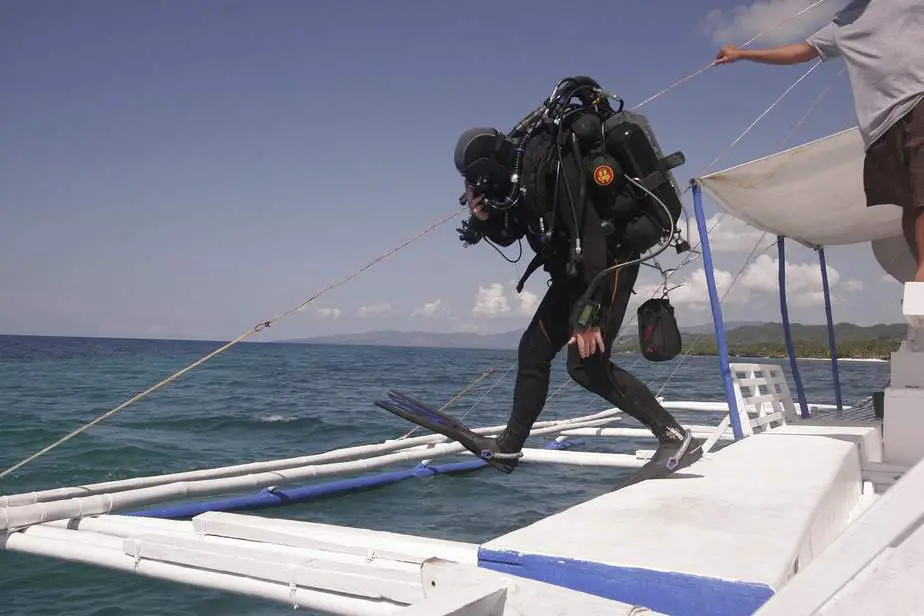
It depends if you consider technical diving to be deep sea diving or commercial diving to be the “real” deep sea diving. As a technical diver, you can continue your diving education and learn new skills. In that case, yes, as a technical diver who relishes in deep recreational diving, it can be done as a hobby.
However, the continuous process of learning new skills, putting what you learned into practice, and honing what you already know takes a gargantuan effort. If you really have a passion for diving, then that’s great. However, at a certain point it will feel like a second job, and it can even be your occupation if you are an instructor or commercial diver.
As the sport of scuba diving advances, new gear innovations come out and techniques improve so that deep diving gets safer and more accessible. At this point, you can still do NDL dives to 130 ft which some divers consider to be relatively deep. Scuba diving as a whole is becoming more accessible, however the most extreme types of diving are still too niche and dangerous.
With that said, technical divers can enjoy significantly longer and deeper dives than recreational divers even in the same locations. This is thanks to their superior training and specialized gear such as a CCR and trimix. If you want to experience this for yourself, then you need to get started with some tec diving courses.
Equipment differences between scuba divers and deep sea divers
Technical diving
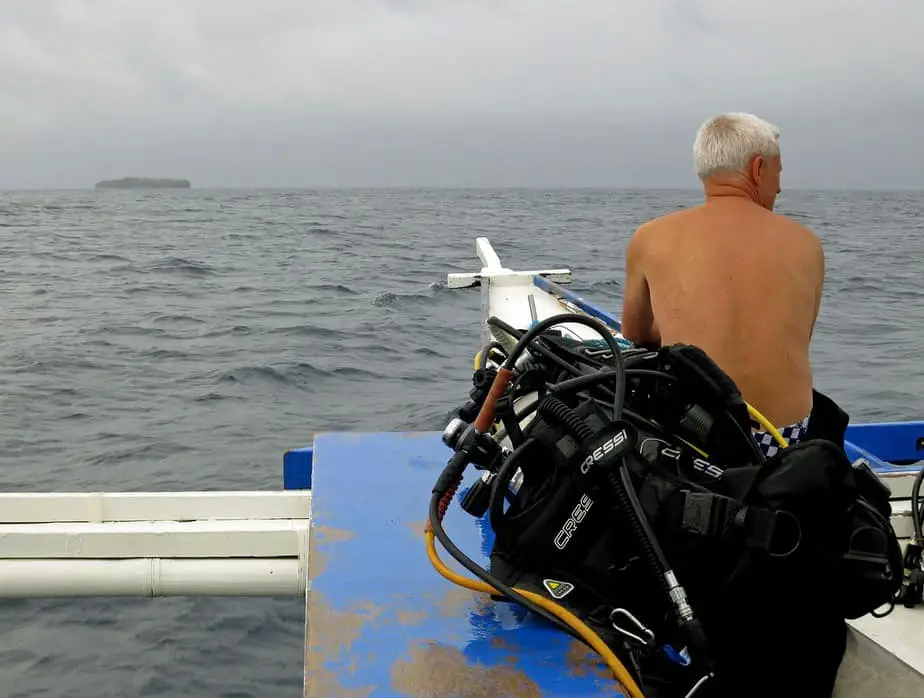
Technical divers can reach some impressive depths, however that also means they cannot easily go back to the surface if there is an emergency. This is further exacerbated if they are diving in an overhead environment where one must first navigate out of that area before they can head to the surface.
Since there can be quite the delay between starting the ascent and actually reaching the surface, tec divers must be equipped with suitable backups so that they aren’t helpless underwater. For instance, they’ll bring a reserve cylinder of gas, as well as an extra dive computer, dive light, mask, BCD, first stage, and any other tool they deem essential to their survival.
As such, tec divers will use a twinset of tanks, plus they’ll also be carrying many other pieces of equipment compared to recreational divers. They may also carry even more tanks that contain different gases for breathing at different depths, such as enriched air nitrox to help them decompress faster and reach the surface in less time.
Often, the spare equipment will be space efficient and smaller or not as powerful as the main tool. The purpose of the spare equipment is not for ensuring the dive can continue; they are there so that divers can safely make their ascent. Equipment malfunctions are so serious that a dive is immediately over if it happens.
Commercial diving
As we mentioned, commercial divers use specialized equipment which typically does not include the standard BCD or fins that you’d expect. They also don’t wear a traditional dive mask or breathe from a regulator or rebreather.
They will wear a diving helmet with a long cord that reaches all the way to the surface. The cord supplies their breathing gas and has cables for their communication system. This allows them to speak freely underwater. Naturally, they can also breathe with their mouth or nose because they don’t need to use a regulator.
As for the exposure suit, they’ll wear a dry suit. The dry suit may be a regular one or a heated one. Depending on how deep they’ll be diving, they may wear an atmospheric diving suit instead. It basically looks like a space suit except it’s designed to withstand intense water pressure at a depth to 2,000 or so feet.
An emergency bail-out gas supply will also be carried in case the umbilical that supplies the air fails.
Gas mixes
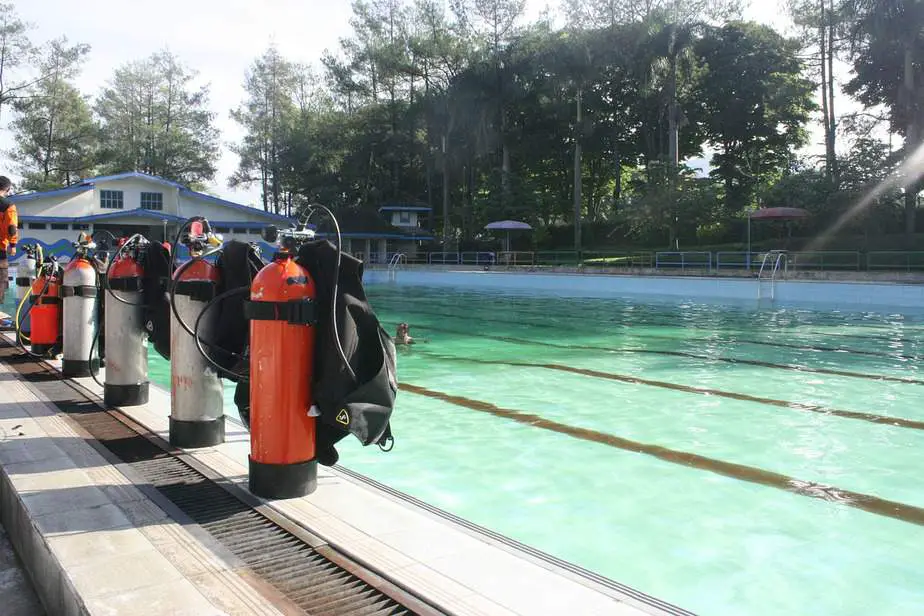
Recreational divers may not know this, but at depths greater than 30 m (100 ft), nitrogen narcosis becomes an issue that divers need to deal with. To stave off its impairing effects, divers must use a gas mix called trimix which is basically helium enriched air.
Helium does not cause narcosis, so divers can safely continue diving without worrying about getting impaired. Since oxygen can become toxic at deeper depths due to oxygen toxicity, dives that exceed 60 m (200 ft), then the bottom gas (the gas mix used for breathing at the deepest part of the dive) will have reduced oxygen content so as to avoid oxygen toxicity.
If there is a bottom gas, then in order to conserve it, there must also be a travel gas to be used when traveling to and from the deepest part of the dive. Since all deep dives are decompression dives, it is necessary for divers to perform decompression stops.
During these stops, divers may switch to decompression gases with higher oxygen content (i.e. nitrox) to speed up the decompression process.
Commercial divers may use air, enriched air nitrox, and trimix for their dives. The exact percentages of each gas mix may be different depending on their needs. They may also use an extremely expensive specialized gas that only commercial divers use called heliox.
Heliox contains helium, just like trimix, however it does not contain any nitrogen. Since decompression sickness occurs due to excess nitrogen in one’s body, removing nitrogen from the equation means that the depth and time limits we typically account for no longer apply. As amazing as heliox sounds, it is very expensive to produce.
There is also hydreliox, which is a gas mix containing oxygen, hydrogen, and helium. Then there is hydrox, which is just a mix of oxygen and hydrogen. Heliox, hydrox, and hydreliox may be used for divers than exceed 200 m (660 ft) or extremely long dives.
What kind of training is required to be a commercial deep sea diver?
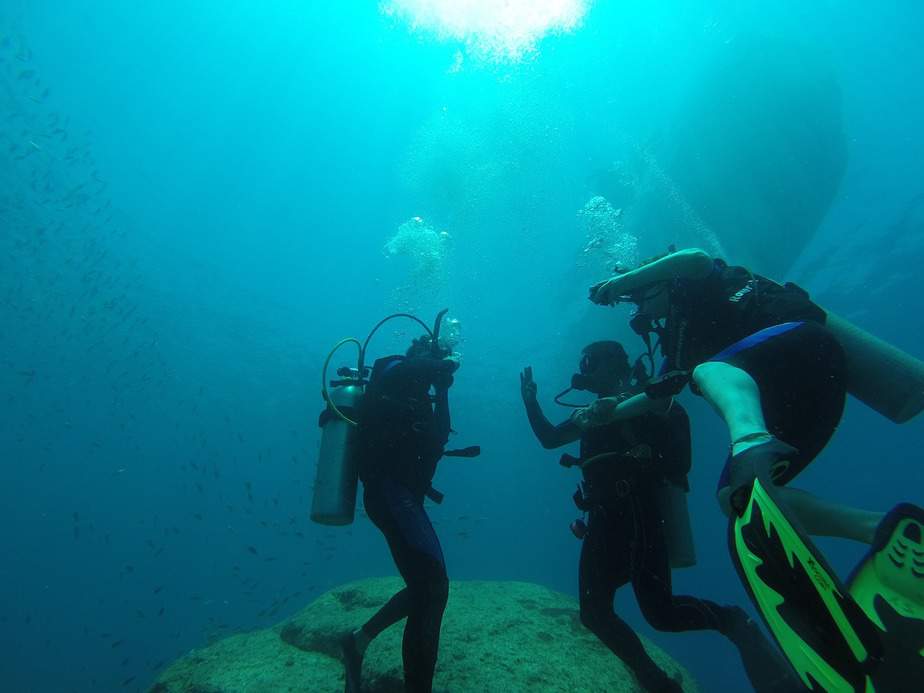
A lot. Just because you are a certified advanced open water diver does not mean you have the qualifications to be a commercial offshore diver. Even an entry level commercial diver needs an impressive amount of training.
We have already discussed some of the equipment and breathing gases used in commercial diving. Naturally, you will have to learn the safety procedures for each of them. You will also have to learn how to perform the specific skill needed for your job, whether that is underwater welding, salvage work, pipe pulls, or taking samples, commercial divers need extensive training.
Just for a basic commercial diving job, you will need to undergo at least 6 months of training. It may take many more years to get the knowledge, skill, and experience necessary to reach the deepest depths.
For someone who is just starting out, your next step is to progress towards technical diving. To do that, you need plenty of diving experience, so keep on logging those dives and earning new certifications. Eventually, you will qualify for the entry-level tec diving course, PADI Tec-40, and you can keep going from there.
Right now, if you still haven’t gotten any experience diving trimix or going to depths of 200 ft or more, then you are still too far away to even consider being an offshore commercial diver.
Parting words
We’ve laid out the many differences between being an entry-level recreational diver, a mid-level technical diver, and a professional level commercial diver. Technically, you can be a deep sea diver without being a professional. However, at the highest level of diving, what they consider to be “deep sea” far eclipses what a hobbyist diver can reach.
You will not be able to brave the deepest depths of the ocean without serious training, specialized equipment, and years of experience. The ocean is another frontier that man has yet to conquer, and deep sea diving can be an immensely rewarding hobby if you fancy yourself to be an adventurer or explorer. Still more than 80% of it remains unexplored, and maybe one day that number will reach 0%.
For those dedicated enough to put in the effort and expense, they can explore places that no other person has ever been before, and that can be very exciting.

